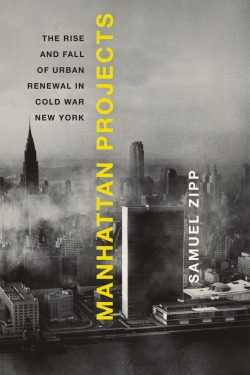Moving beyond the usual good-versus-evil story that pits master-planner Robert Moses against the plucky neighborhood advocate Jane Jacobs, Samuel Zipp sheds new light on the rise and fall of New York’s urban renewal in the decades after World War II. Focusing on four iconic “Manhattan projects”–the United Nations building, Stuyvesant Town, Lincoln Center, and the great swaths of public housing in East Harlem–Zipp unearths a host of forgotten stories and characters and shows how boosters hoped to make Manhattan the capital of modernity, while a chorus of critics attacked urban renewal for perpetuating deindustrialization, racial segregation, and class division. Cold War-era urban renewal was not merely a failed planning ideal, Zipp concludes, but also a crucial phase in the transformation of New York into both a world city and one mired in an urban crisis.
Samuel Zipp
Samuel Zipp is a cultural, intellectual, and urban historian with particular interest in 20th-century cities, the built environment, United States history since World War II. He earned his Ph.D. in American Studies from Yale University. He is an Assistant Professor of American Civilization and Urban Studies at Brown University, teaching courses in 20th century urban and suburban history, politics and culture in New York City since 1945, and popular music and the city.
